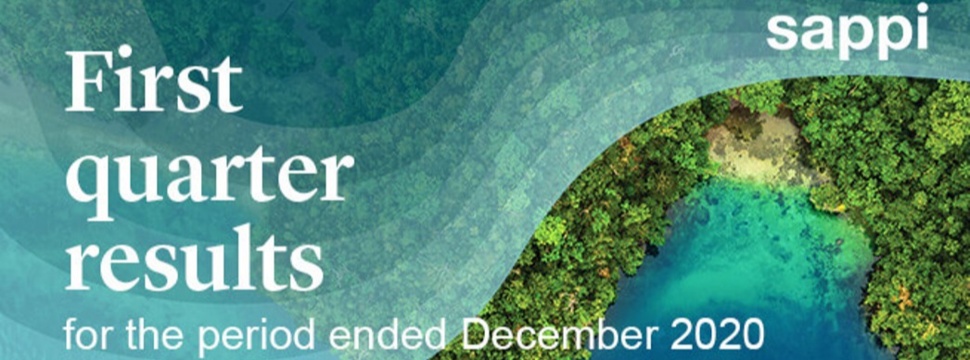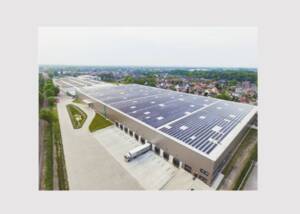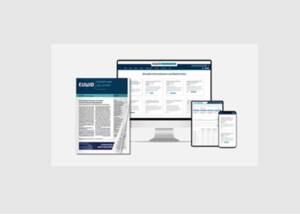Sappi shows a recovery in results for first financial quarter 2021
News General news
Commenting on the group's results, Sappi Chief Executive Officer Steve Binnie said: "I am pleased with the continued recovery in our results over the past nine months. EBITDA improved progressively from a low of US$26m in our third quarter of 2020 due to the impact of Covid-19 to US$98m for the first quarter of our 2021 financial year. I am confident that our recovery is on track despite the ongoing negative affect from Covid-19."

He continued: "As a group we outperformed the guidance provided at the end of the last quarter with profitability across all reporting segments exceeding expectations. During the quarter, the global surge of Covid-19 infections and the related employee absenteeism put all of our operations under pressure. In spite of the unprecedented obstacles that have arisen as a result of the pandemic and through the dedication and resilience of our workforce, our mills remained fully operational."
Looking forward, Binnie stated: "Despite the ongoing impact of Covid-19, we expect profitability in the second quarter to improve relative to the first quarter. Ensuring the safety of our employees and supporting our customers and communities is a priority and our comprehensive Covid-19 action plan remains relevant and in place."
Financial summary for the quarter
- EBITDA excluding special items US$98 million (Q1 FY20 US$139 million)
- Net debt US$2,056 million (Q1 FY20 US$1,916 million)
- Loss for the period US$17 million (Q1 FY20 Profit of US$24 million)
- EPS excluding special items -1 US cent (Q1 FY20 6 US cents)
For the quarter, the overall improvement was due mainly to dissolving pulp (DP) markets and graphic paper demand in North America recovering at a faster rate than anticipated. These benefits were partially offset by the impact of the Ngodwana Mill maintenance shut, which had been rescheduled from the third quarter of last year, as well as the scheduled Somerset Mill maintenance shut.
The economic effects of the Covid-19 pandemic continued to impact performance with graphic paper sales still well below 2019 levels. The pandemic also severely affected global shipping and container availability which somewhat reduced our dissolving pulp sales volumes in the quarter.
DP markets tightened considerably, and market prices rallied by US$106/ton through the quarter. Key drivers behind the price increase included DP capacity curtailment, resurgent viscose staple fibre (VSF) demand and prices, higher paper pulp prices and a weaker US$/Renminbi exchange rate. The impact of Covid-19 related shipping challenges combined with the Ngodwana Mill shut and reduced production volumes from the Saiccor Mill due to the temporary halting of the calcium line, reduced DP sales volumes by 16% compared to the same quarter last year.
Packaging and speciality papers sales volumes in all three regions experienced encouraging growth compared to the prior year. While demand for most categories was positive, some non-essential products in Europe were affected by the Covid-19 related lockdowns and other governmental measures. Profitability was partially reduced by lower selling prices linked to depressed pulp prices.
Graphic paper demand continued to slowly recover from the impact of Covid-19 and volumes were down 19% compared to the same quarter last year, an improvement on the 32% reduction experienced in the prior quarter. While North America recorded a strong recovery, soft coated mechanical (CM) demand in Europe, weak export markets in South America and Australasia and low selling prices were a drag on profitability in this segment. The group took production downtime of 125,000 tons in the quarter, entirely in Europe, which was less than the 321,000 tons required by the group in the prior quarter. South African newsprint and uncoated woodfree demand continued to be adversely impacted by the weaker domestic economy.
Outlook
There has been a pronounced recovery of pricing and demand in DP markets. As of 29 January 2021, the Chinese market price had improved to US$895/ton, driven by a number of positive factors including low inventory levels, rebounding textile demand, higher VSF prices and favourable US$/Renminbi currency movements. The full benefit of the rising DP prices will be phased through future quarters due to the quarterly lag in contract pricing. A strengthening ZAR/US$ exchange rate is expected to negate some of the pricing benefits for the South African DP segment. Despite the improved market conditions, we are encountering logistical and production challenges at our South African DP facilities as a result of Covid-19. Notably, a severe second wave of Covid-19 infections in South Africa has necessitated a prioritisation of oxygen supplies into the healthcare sector. Consequent restrictions on the procurement and transport of oxygen to the South African mills have resulted in a temporary curtailment of DP production at the Ngodwana Mill in the second quarter.
Underlying demand for packaging and speciality paper products remains resilient as consumer preferences default to more sustainable alternatives. We continue to ramp-up sales and production in North America and Europe following the completion of the Somerset Mill and Maastricht Mill conversions. However, Covid-19 may adversely impact demand for certain non-essential consumer products.
The global resurgence of Covid-19 and associated extended lockdowns and restrictions on economic activity are expected to stall the graphic market recovery, particularly in Europe. A rapid and significant rise in paper pulp costs is expected to reduce margins in this segment. Whilst we have announced selling price increases in most of our markets to mitigate this risk, there will be a lag before the benefits of the increases are realised. The recent series of paper machine and mill closures or conversions in the industry are expected to improve the supply/demand balance resulting in a recovery of operating rates in the coming quarter and year.
The strong demand of our packaging and speciality paper grades combined with the sharp recovery in DP markets support our strategic focus as we transition the business towards higher growth segments.
Capital expenditure in FY2021 is estimated to be US$400 million and includes the approximately US$100 million related to the Saiccor Mill expansion project. The increase in estimated capital expenditure from the previous guidance of US$370 million is as a result of the strengthening ZAR and Euro relative to the US$. The Saiccor Mill expansion project is scheduled to start production during the fourth quarter.
Second quarter earnings will be tempered by the production curtailments related to oxygen availability at our Ngodwana Mill, global logistical challenges and the negative impact of Covid-19 on our European graphics segment. However, there are no material annual maintenance shuts planned for the quarter and we anticipate good performance from our packaging and speciality papers segment. Therefore, we expect the second quarter EBITDA to improve relative to the first quarter.










